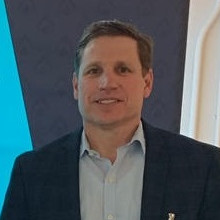As 3D printing technology evolves, manufacturers are constantly looking at the feasibility of using 3D printing for manufacturing. Questions arise like how fast can you print parts and how much does a typical part cost? These are loaded questions that apply not only to additive manufacturing but to all manufacturing processes.
Injection Molding
Let’s first think of this in the context of injection molding. When reviewing a program for injection molding there are some basic questions that need to be addressed. What are the projected annual volumes, quality requirements, material used, special requirements, and critical features? They may also want to know if this is a component of a larger program or part of an assembly? Does this require a clean room? And so on. The answers to these questions often lead to a new set of questions. What cavitation tool is required? Can the part be molded as is? What is the cost of material? What is the cycle time? Does the job require an operator or will it be fully automated? Are there packaging requirements? How will it be inspected? Does it require process validation? You get the picture.
Traditional 3D Printing
By identifying the right circumstances, additive manufacturing is able to vastly simplify this process. Additive manufacturing starts with a few basic questions first:
- Can the process meet the tolerances required?
- Is the process repeatable and accurate?
- Are the current materials suitable for the application?
If we get positive answers to these questions, we often start to get excited. The process now starts to get real. In the end it comes down to cost benefits and/or performance benefits. When looking at the 3D printing of microstructures, the narrative is slightly different than the story we’re familiar with using traditional additive processes.
In general, 3D printing material is much more costly than thermoplastic pellets. There is a negative impact on the cost-benefits of 3D printing as parts grow and require more material to print. With traditional additive processes we are typically dealing with high material costs and the need for loose tolerances or slower printing speeds. The tools needed to mold the same parts are generally less complex, keeping tooling costs relatively low. For example, it is not uncommon to purchase a couple thousand parts from a prototype/low volume molding company for less than $10,000. At that point the advantage of 3D printing in volume vs molding is low.
To the credit of the additive market, companies have leveraged the multitude of benefits additive has to offer to optimize designs that allow for better performance, reduction of part count, and advantages of leveraging a local and liquid supply chain. The markets and applications are still limited due to cost at higher volumes, throughput, and volume requirements.
Projection Micro Stereolithography
With Projection Micro Stereolithography (PµSL) the cost advantages are much more obvious. The elevated cost of the tooling for micro injection molds and the minimal volume of the parts requiring less material greatly impacts the cost analysis. The fact that 3D printing doesn’t require tooling has always been an advantage. This advantage is even more obvious when looking at micro injection molding. The cost of a single cavity complex micro mold can often cost upwards of $100,000.
Also key to the cost analysis, the printed parts use very little material so material costs are minimal. With micro 3D printing, you can print tens of thousands of parts before the amortization of the tool is realized. If you only need 100’s of parts, the value of micro 3D printing skyrockets. Quite simply, fabricating micro parts through traditional manufacturing methods is very costly and difficult. BMF’s PµSL technology takes the complexity out making 3D printing a very attractive solution for complex micro-precise parts.
If you’re interested in learning more or are interested in having a sample part printed, please contact us.

